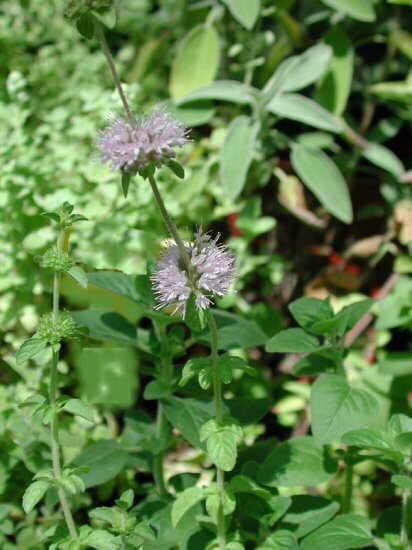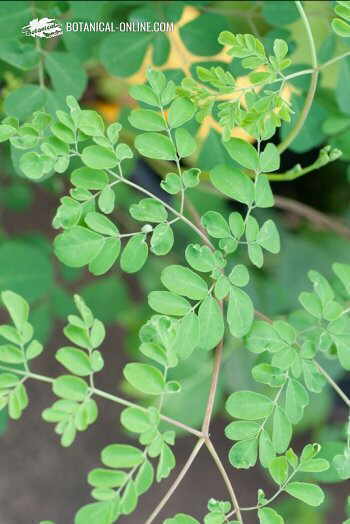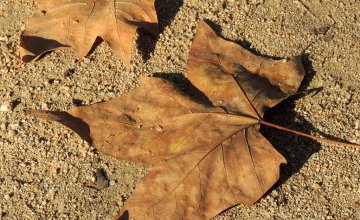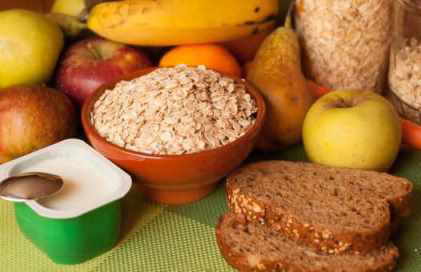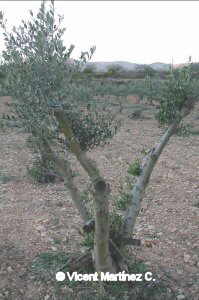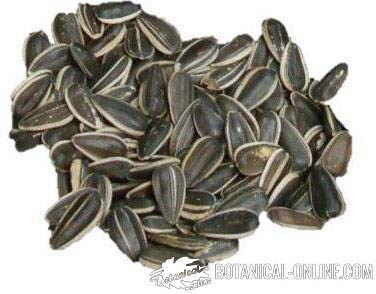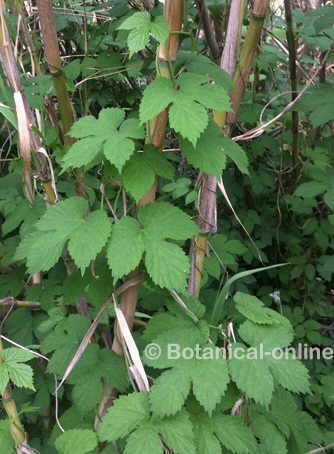Contents
CHARACTERISTICS OF WILD TURNIP
Photo of turnips (Brassica rapa) |
Common English name: turnip, turnip rape, fast plants, field mustard, turnip mustard, Canola Polish variety.
– Spanish: nabo silvestre, berza silvestre, colinabo, naba, nabicol, nabilla, nabina, nabo gallego, nabo, raba, nabiza, grelos.
Scientific name: Brassica rapa L. = Brassica campestris L.
Family: Cruciferae plants
Origin of turnip:
Native to central and southern Europe, where it has been cultivated for over 4000 years. It is estimated that the area of origin that extends from the eastern Mediterranean to the east of Pakistan and China.
Turnip appears in the writings of Alexander the Great (356-323a.C.), This vegetable was grown from East in China to North Africa through trade routes. Currently, it is cultivated worldwide.
Habitat: Species of horticultural interest so it is cultivated. It can grow at altitudes up to 3,000 m. Also in old fields.
Distribution: it is grown on all continents. In Asia there are cultivated varieties, such as Chinese cabbage (B. rapa var. Chinensis), which has great importance in the diet, and packchoi (B. rapa var. Pekinensis), very popular in Japan.
In some places it has become an invasive plant, such as as in Eritrea, Ethiopia, Kenya, Uganda, Tanzania, Zimbabwe and Mozambique.
 Characteristics of wild turnip
Characteristics of wild turnip
| ||||||||||||||||||||
A turnip (Brassica rapa = Brassica campestris) is a plant of the Brassicaceae family, the same family to which other food vegetables like collard greens, mustard, broccoli or arugula belong.
It is biennial, height 0.5 m. and 1.30 m., whose napiform root is consumed as food. Its structure is napiform, fleshy, globose and rounded, with numerous lateral absorbent root hairs.
This structure is the storage organ of the plant, rich in nutritive substances such as carbohydrates and minerals, which allow the plant to withstand adverse weather conditions of high places where it can be grown.
Turnip leaves are ruffled, bright green, 30 – 50cm. long. These are long stalked.
The inflorescence is a terminal raceme of yellow flowers, 10-30cm. long. Leaves arranged in the flower stem are sessile, hugging the stem, oblong to lanceolate, glaucous.
The flowers of this plant are characteristic of the Cruciferae. These have four sepals of 4-5mm., 4 petals in a cross of 6-10mm., And 6 stamens, 2 of which are shorter. They are hermaphrodite and pollinated by insects such as bees.
Turnip flowers appear in spring, from May to August of the second year of cultivation.
The fruits are pods, green, 4 – 6,5 cm. long, pedicelled and acuminated at the apex.. Turnip seeds are inside them, they are black, brown or red, 1.5 – 2cm. in diameter.
Fruiting takes place in summer, between July and September of the second year of cultivation.
Used parts
– Root, leaves, seeds.
Uses of Wild Turnip
– Turnip as food: The leaves and the root of this plant are used as food. The tender leaves are collected, and taken raw in salads or cooked, boiled, in soups or stews. These are rich in antioxidants and folic acid.
The root is cooked in soups, stews, cream, fried or roasted. Only young turnips are taken raw, grated in salads, as a radish.
It is a very appropriate for pregnancy diets (because they are high in folic acid), for people with cardiovascular disease and diabetes.
* More information about the Turnip as food in the listing below.
– Turnip as medicinal plant: this plant is used medicinally for its antioxidant properties. External use has rubefacient properties.
* More information about the medicinal properties of Turnip in the listing below.
– Turnip for seed oil: Turnip oil can be extracted from turnip seeds. this is is rich in linoleic acid, erucic acid and linolenic acid. However, it is not used as food because the erucic acid can cause growth problems and malformations,such as it has been experienced in animal research. Currently, it is being working to reduce the content of fat in this type of food that some vegetable oils contain, such as rapeseed oil, from the same botanical family.
– Insecticide: Turnip contains glycosides, natural insecticides that repel natural predators of the plant. These are responsible for the spiciness of brassicas, such as cabbage or turnip. In the body, these components are antioxidant.
– Forage for animals: in some regions known as forage turnips. It is food for animals during winter.
– Pest control: This plant contains allelopathic compounds that help to control soil pests.
Composition of wild turnip
| ||||||||||||||||||||||||||||||||||||||||||||||||
The roots are rich in carbohydrates, although the high water content makes it a very low calorie vegetable.
– Protein: turnip content is low. It contains amino acids: glutamic acid, lysine, leucine, glycine, arginine, tryptophan, tyrosine, valine, histidine, methionine and threonine.
– Fat: linoleic, linolenic, oleic, palmitic.
– Fiber
– Phytosterols: brassicasterol, campesterol
– Minerals: potassium, phosphorus, calcium, manganese, sodium, iron, boron, chromium, cobalt, copper, zinc, selenium
– Vitamins: thiamine, riboflavin, niacin.
– Natural pigments with antioxidant properties: beta-carotene, lycopene.
– Glucosinolates: common antioxidants in cruciferous plants.
– Allantoin and derivatives (allantoic acid) component present in some plants and in the umbilical cord of mammals. It has healing properties for skin (more).
 Toxicity of wild turnip
Toxicity of wild turnip
– In humans, consumption of these vegetables is not toxic. However, it contains goitrogenic compounds that can cause goiter in people with diets low in iodine. This is the case of patients in Galicia (Spain), which relates the high incidence of goiter with a iodine-poor diet together with a diet rich in this vegetable.
– Plant toxic to animals: due to its content of S-methyl cysteine sulfoxide, L-5-vinyl-2-tiozozolidona (goitrogenic compound) and nitrates, spots may occur in the milk of animals fed with these plants. In large amounts, it can cause gastrointestinal bleeding in animals leading to death.
![]() More information about turnip.
More information about turnip.

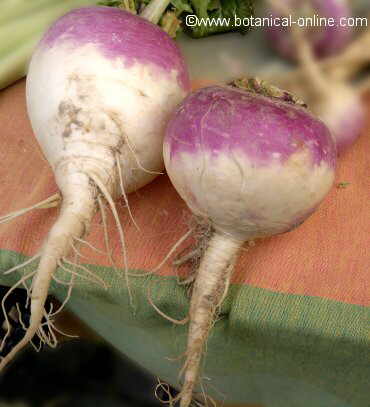
 Characteristics of wild turnip
Characteristics of wild turnip